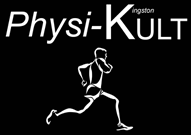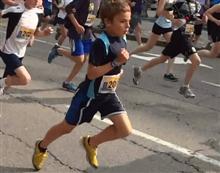Q&A with Fritz Taylor, Mizuno’s VP/GM of Running (Mizuno USA)
 1. How has Mizuno changed over the last 2 years?
1. How has Mizuno changed over the last 2 years?
I think if you ask that question to anyone on our team they would point to 2 key areas where we have focused a lot of our attention: A) We have a much better understanding of what our strengths are and how those strengths should come to life in everything we do – footwear, apparel, service and promotions. And B) Because we know what we are good at, we have become more confident in our direction. We know that we don’t need to do everything in order to succeed. As example, we aren’t going to chase every trend in the market place – it’s not in our DNA. But you can bet that when we do introduce something new there is going to be a heck of a lot of research, testing and science behind it and it is really going to work.
2. What should outsiders know about the Mizuno culture?
Our culture is unique because it is shaped by two big influences. First, we are a Japanese company and that essence permeates a lot of “how” we do things. We are definitely a lot more humble and concerned about long-term success in our approach to business than a typical western company. And our Japanese heritage also values quality, craftsmanship and building long-term partnerships. Our second big cultural influence is the passion everyone on this team has for running. I am sure everyone I work with has the talent to be making a heck of a lot more money if they were employed in a more traditional business somewhere else. But they are here because they love this sport and they believe in what we do. That combination of influences – mixing the calm of the East with the passion of the West – makes for a pretty interesting workplace.
3. How does Mizuno interact with the consumer in 2011 as opposed to 2009?
Honestly, that is still a work-in-progress. We know we have a passionate and devoted base of Mizuno Running fans so a big part of our challenge is to figure out how to spread that enthusiasm farther. A lot of today’s runners haven’t even heard of Mizuno! So we are putting a lot of effort in to changing that. We have a new VP of Marketing, Jessica Klodnicki, who is really helping us figure things out and we just hired a new Running Brand Manager – Vicky Wilkens who comes to us from Active.com. I feel pretty confident that we now have the talent to help us figure how to get our story out there in a uniquely Mizuno way.
4. You have recently hired Shine Agency, one of the most respected media collectives in the US, how will they affect your branding message?
The gang at Shine are awesome to work with. We have only been working with them for about 6-7 months so you haven’t seen the result of their talents yet. They reached out to us originally because they are runners and triathletes who love running in our stuff and they can’t believe we aren’t much bigger. And because they are just as passionate about running as we are you can see and feel that passion in the creative they’ve been sharing with us. We are just now working through plans for the launch of the Wave Rider 15 later this year and our plans for 2012 and I think runners will love what we are going to be saying.
5. Mizuno’s product has been compared to the car brand Volvo: practical, reliable, well made, and safe. How do you see your brand in 2011?
Interestingly, we just hosted a 2 day Mizuno Running symposium here in Atlanta where we flew in 100 key employees from Running Specialty stores across the country. One of the feedback exercises we asked them to do was to describe what kind of car Mizuno would be if Mizuno were a car. Their answers were pretty telling – almost all of them used words like “fast, light, quality, high performance, sporty, etc.” The cool thing about that exercise was that these were pretty influential running store employees and they were independently saying the kinds of things we hope runners say about us. So maybe we are like a Volvo in the way we stick to our formula for success…but I think that formula comes to life in a faster, lighter package in the minds of runners. We know we are a running brand that has always embraced a “minimalist” approach to product long before it was trendy. Now we have a cool opportunity to share our product beliefs with more runners because the appreciation for that kind of product building ethos is so much more wide-spread.
6. Mizuno has huge street cred in performance running, how do you translate that into sales in the more diverse running community?
I think that is really a good problem to try to solve versus the alternative. A lot of brands struggle to establish or maintain credibility, where we have really awesome credibility but are challenged to get ourselves on the radar of more runners. Our strong “street cred” is due to the fact that better runners have always appreciated the light, responsive feel of our shoes. Two years ago our mission was to convince more runners that lightweight shoes with more of a responsive road feel was a better experience. Now with all that’s going on in the market we don’t have to convince – we just need to help them discover what running in Mizuno is all about! You can bet that seeding and product trials are going to factor heavily in to our plans.
7. Mizuno is 1-4 in most performance running retail? How do you improve there?
Some stores have Mizuno as their primary running brand, is that a different trend?
Everyone knows Running Specialty stores are a real battle ground these days with so many brands trying to elbow their way on to the shoe wall. Running manufacturers have to bring the “complete package” of product, service and promotions if they want to compete. But the other funny dynamic is that some brands have enjoyed success in Running Specialty and have now sets their sights on bigger frontiers. We still have a singular goal of being a great specialty brand and we think that persistent focus can differentiate us. Like I mentioned earlier, we are a bit more humble in how we go about things so we aren’t going to thump our chest and claim we are going to be #1 in Running Specialty. We’ll quietly work on being a great partner and let the ranking take care of itself.
8. Where do you see the running business going in the next two to three years?
My drive home from work goes past a very popular running route in my home town of Decatur, GA. And every evening I can’t help but be impressed with the incredible popularity and diversity of how running has evolved and grown over the last years. I can’t think of a more open and “democratic” activity that encourages everyone to participate and enjoy the benefits. And I think a lot of what we are all dealing with in today’s world will only continue to make running even more appealing. We’ve already seen that when the economy is in trouble that running becomes a cost effective way to get some exercise and relieve stress that a lot of people turn to. And when you think about all of our other current issues like our nation’s growing obesity, our desire to find an escape from the “always on” digital world, and our growing awareness that aerobic exercise can improve one’s health and quality of life, I think the running business is going to be a great business to be in for a long time to come. I absolutely believe that we can make the world a better place by encouraging more people to run!
9. Do you have opinions on minimalist running? How will Mizuno respond to that
culture?
I have quite a few thoughts on the whole minimalist trend…and one major concern. My big concern is that there is so much confusing information around minimalist running right now that the newer runner will get frustrated and give up rather than get out and enjoy a run. Bottom line – running is so broadly appealing because it is so darn simple and if we continue to over-complicate things then we will ultimately alienate potential new runners.
If you drill-down to the fundamental insight driving a lot of interest in minimalist running it is the age-old issue of staying injury free. The #1 concern of every devoted runner is avoiding a lay-off due to injury and many runners, especially those with a history of injuries, will go to almost any length to avoid another one. The big, under-lying motivation with minimalism is a belief that running in less shoe helps runners avoid injury by strengthening their feet and legs and/or allowing them to run with better form.
But what if there was a different way to address that same motivation? We fundamentally believe that the shoes we’ve been building for the last decade offer a just the right balance of being light and low to the ground while still offering needed protection from the hard, unforgiving surfaces that 99% of us run on. But what if we could offer runners another way to stay injury free other than sacrificing the great feeling of running in a shoe like the Wave Rider? We are actually taking a very traditional Japanese solution and translating that in to a modern day running product that we will introduce in 2012. And we have some very impressive test results from independent Japanese laboratories that have inspired us. The real beauty of our approach will be its simplicity. Stay tuned.
10. Do you have opinions on lightweight running? How does Mizuno continue to respond there or change its response?
We love the swing towards more lightweight shoes because as I’ve said previously – that’s always been our product building ethos and our forte. But we also believe in balance. Two years ago big, soft, marshmellowy shoes were the trend in the market. We never went there because we never believed it was the way to create the best running experience. Sure, we might have sold a lot more pairs to unsuspecting runners if we had made our shoes more seductive when they were standing around in a store. But we weren’t willing to sacrifice what we believe is the best running experience simply to cater to a fad. Now the pendulum has swung the other way and everyone is jumping on the lighter-lower bandwagon. Guess what? We aren’t going to join a cat fight about who has the lightest training shoe on the market. We believe the right balance of lightweight, under-foot cushioning and a smooth heel-to-toe transition delivers the most amazing ride and we will continue to stick to our beliefs about how to best deliver that.
11. What is the greatest strength of your brand?
We are a 106 year old brand and we are in this for the long run. I know that is a very Japanese way to look at things that might seem at-odds with today’s fast-paced environment. But I think the underlying strength of that way of thinking is a firm confidence that doing what’s best for the runner always pays off over time.
12. What is the greatest challenge?
I think one of our biggest current challenges in the same challenge that all the brands are facing – and that is the increasing cost of making our shoes and apparel. We’ve had more than a decade of very, very small increases and suddenly costs have become very volatile. If part of the broad appeal of running is it’s relatively low cost, then we need to re-invent how running shoes and apparel are made if we want to keep that appeal. Fortunately, I think we have the talent and experience to help solve the issue in the long term. But I think the shorter term is going to be a bit crazy as all of us adjust to the new realities we are faced with.
13. What would you tell retailers who are considering Mizuno?
If a retailer currently doesn’t carry our brand I would say the same thing to them that I’d say to any runner – “Take our shoes out for a test drive.” First and foremost, we need to deliver a uniquely appealing running experience that they won’t find anywhere else – and I believe our products do that. Next, I’d want them to understand that we are a brand that is in this for the long run and that a partnership with Mizuno means a long-term commitment to success for both partners.
14. And how would you want the consumer to see your brand, Mizuno?
Our hope is that runners will see the Mizuno name and logo a feel a special connection through our shared passion for running. We have some strong, long-held beliefs about what a great running experience is all about and we are going to be doing a better job of sharing those beliefs with runners in the future. We want runners to see our brand and trust in our ability to provide them the best running experience possible.



 For Steve Boyd, Queen’s University head track coach and founder of the Kingston, Ontario running group
For Steve Boyd, Queen’s University head track coach and founder of the Kingston, Ontario running group 



 Our Magazine
Our Magazine
